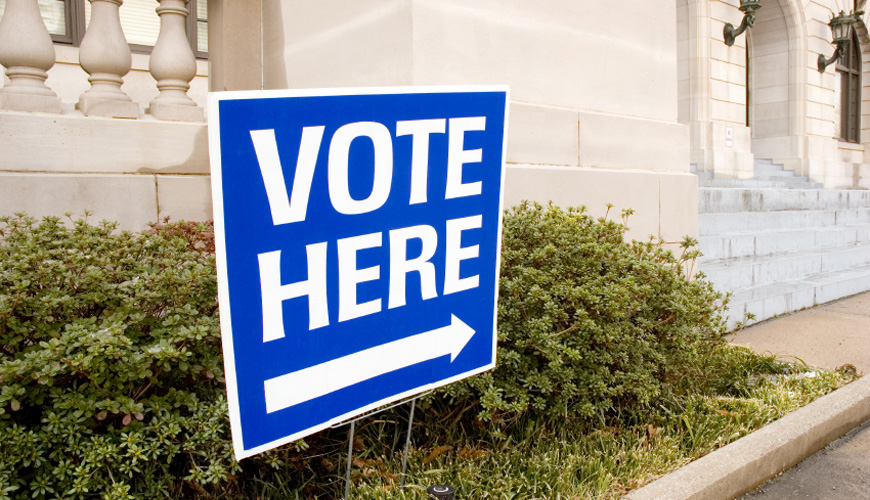As the election closes in, no doubt GOTV is on your radar. Digital can and will impact GOTV in 2012, but all of the coolest and latest technology in the world is worthless to a campaign or advocacy organization unless it increases voter turnout. Here’s five ways you can create a competitive advantage with the right digital tools.
1. Social Media for GOTV
First, engaging in social media will increase your awareness among activists. This means that your GOTV message on Facebook and Twitter should not be so much “Get out and vote” but “How many of your friends and family have voted?”
2. Email for GOTV
Second, if you have made building an email list a priority for your political, communications, and finance teams, you should have a sizable and engaged email list by the time early voting starts. Again, no matter how big your email list is, your audience is far bigger than your list. Your email list is to connect with people who can then engage their neighbors, family, friends, coworkers, fellow church-goers… anyone in their networks, online or off. So really spend some time thinking about how your GOTV email campaigns can be creative, funny, interesting. Make them something that your supporters can’t WAIT to forward.
As always, I will add the caveat to be careful when adding email lists, from other candidates or elsewhere. The more you dump outside email lists into your house file, the increasing likelihood that enough people will mark your emails as spam, which will result in you getting blacklisted by major email providers such as Comcast, Gmail, and AOL. Regardless of how many email addresses might be in that Excel file you have from 2008, there is nothing worse for your email GOTV effort than having every one of your emails go to the junk mail folder.
3. Put GOTV ads online
Third, online advertising is the new frontier of voter contact, so go ahead and stick it in your budget. How much? 10% of your voter contact budget should go to online media. Fully realizing that some people will fall out of their chair at that number, let me offer a simple justification.
The goal of voter contact is to, um, contact… voters… right? So where are your voters? Almost every study over the past few years shows that a minimum of 50% of US adults (not just “online active voters”) go online looking for information about elections. When you do look at active voters, that number goes even higher. And while, yes, TV still does account for a higher percentage of all adults, if at least 50% of your voters are going online, looking for information about your election, isn’t that worth at least 10% of your voter contact budget?
Today there are countless online advertising options, from Facebook and Google ads to sophisticated ad exchange buys and retargeting. You will want to work with a skilled online media buyer to look at all of the options and what is the best use of your campaign dollar in this regard. We work with CampaignGrid to provide this service for our clients and highly recommend them both for their knowledge of the online ad space as well as their friendly, responsive service.
4. Leverage your website for GOTV
Finally, the website itself. One of the best things you can do to use digital to impact GOTV between now and the election is focus on making it a portal for information about your campaign. Where is your candidate? Who supports him/her? What is their position on the issues? How can someone get involved? As you build our your website as a trusted, timely information resource for people interested in the election, it will be a de facto place to go for people as the election approaches.
Along these lines, be sure to have a page with voter information ready to go as the election approaches. Include contact information for county clerks, how people can vote in each county (absentee, early, election day), and who to call if they run into a problem. Have a “Voter Hotline” setup (easy to do with Google Voice) that people can call and get help over the phone.
5. The hub of digital GOTV: Data
As you know, your database is your most valuable asset when it comes to turning out voters. If you haven’t already, start building a comprehensive database of all of your campaign’s touch points with voters. Do you have all of your voter ID work in once place? All of your door knocks, phone calls, event attendees? Is your address and email data merged so you can geotarget emails down to the street or neighborhood level? Is your donor data merged in as well so you can target emails and other communications to small donors, maxed out donors, and volunteer/donors?
Creating a unified database for your campaign can be a lot of work, but it is worthwhile. The ability to micro target digital communications allows you to increase the relevancy of your messaging and thus increase your impact.
With 114 days until the next election, you have the benefit of time to make a strategic decision that you will use digital as a competitive advantage. If you don’t, you can guarantee that your opponent will.

